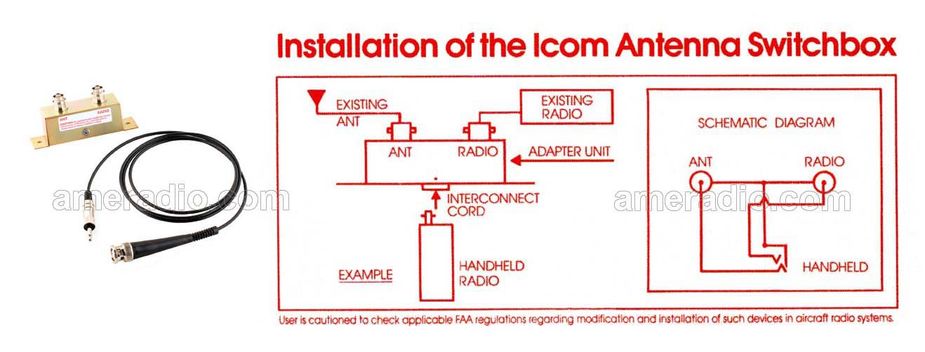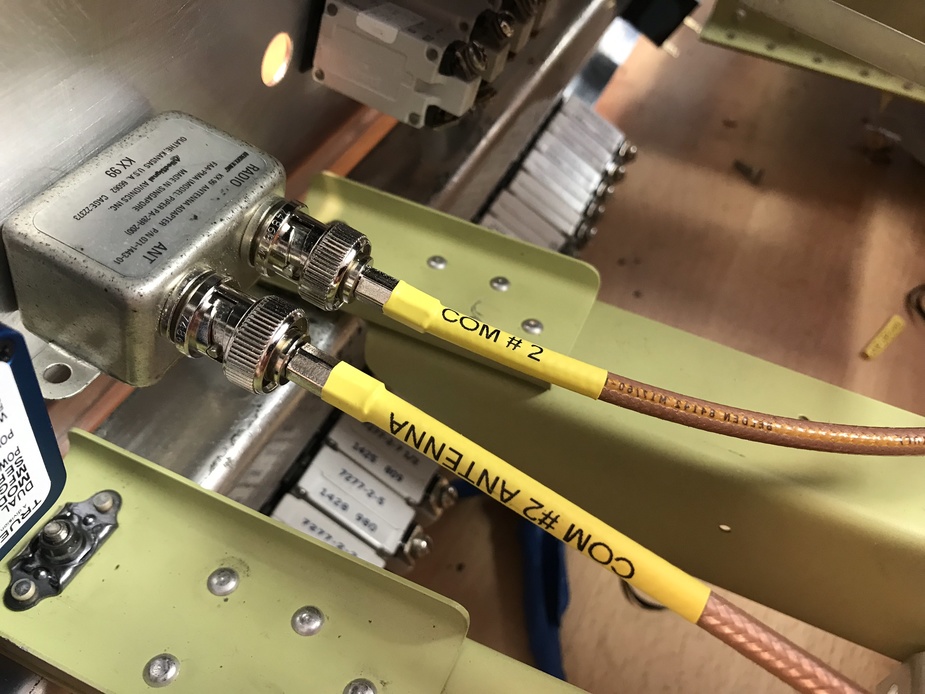Peter wrote:
I presume that metal box is powered from the aircraft. If not then god knows how they did it… must be using the switch on the socket to switch the RF directly (ghastly).
Which is in fact precisely how they do it. It’s unpowered, it switches just like plugging the headphone jack into a portable audio device switches from speaker to headphone…

Given the low power of the radios involved, you can get away with the impedance discontinuity without blowing anything up, but it still fills me with a sense of horror. Especially if the handheld comes unplugged while transmitting.
The King version. It boosts the handheld radio from about ten miles range to Sixty miles +
What is this KX-99 box?
All I can find is a 28 year old King handheld radio – KX-99 user manual.
To boost a signal it must have a power connection.
P/N 071-1443-01 is this

Another photo I found shows a 3.5mm jack socket on the back

However, it gets better… 15 years ago I found the MM for this radio: KX_99_mm_006_05680_0000_pdf. On page 15 (of the PDF) it shows the function of this KX-99 antenna adapter.
Peter wrote:
To boost a signal it must have a power connection.
Not necessarily, a more efficient antenna will boost the range entirely passively. The rubber ducks on handhelds are pretty inefficient (even in the best conditions, probably having a negative gain in dBi, especially when used within the cockpit which attenuates the signal further. I wouldn’t be surprised if using an efficient external antenna would give you at least on the order of 13dB or so compared to the rubber duck used inside the plane, possibly more (given it’s most likely the station you want to talk to is in front of the plane, the handheld is also going to have the engine and prop in front of it when using its rubber duck).
Bit of an extreme example, but my handheld will not even show one S point trying to receive the Ronaldsway ATIS inside my house, but if I connect it to the external one on the roof, it shows S9+ (each S point is 6dB).
Sure; a bigger antenna will do that, but do you need a “box” for the impedance matching? I am no expert on RF antenna matching but AIUI it is all a 50 ohm system, so you can connect the BNC socket on the handheld radio directly to a rooftop antenna, with a 50 ohm coax. That’s the arrangement I have had in my plane since 2002 and it works.
There’s going to be a noticeable impedance bump with that audio style jack connector, but with the power involved (less than 10 watts) the people who designed that box decided they could get away with it. I’m sure they could have designed a way to use a BNC on the front (such that the act of plugging in a BNC connector would mechanically actuate a proper RF switch inside the box, instead of the “speaker/headphone” switch in the audio jack they used), but that would have meant having to sell the box at $300 with $30 of parts, instead of selling the box at $300 with $0.99 of parts :-) A bit like Piper could have used a decent container as a brake fluid resevoir with luxuries like a sight glass, instead of using a 3-in-1 oil can!
Peter
I think you misunderstood me, the “boost” in signal is what leaves the aircraft via an external antenna as compared to the short rubber antenna supplied with the KX99.
The small box is a mechanical relay and the boost is entirely because of the efficiency of a properly mounted antenna ( in this case mounted internally in the tea chest like structure of my DR400 ) .
In my opinion the increase in performance is likely to be even more noticeable in a metal aircraft as using the short rubber antenna in a metal box is likely to cut the range even further.